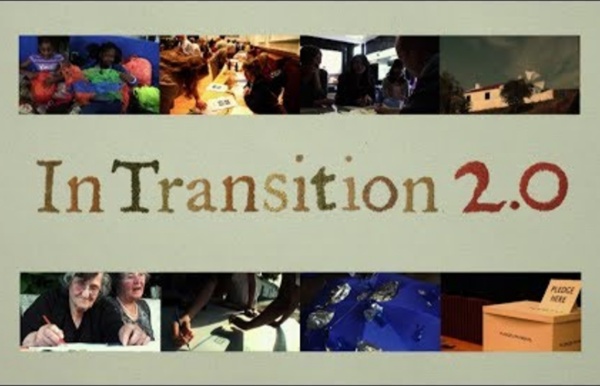



Cohousing Now: Home – in Swedish Kollektivhus NU – is an association working to promote collaborative housing and other alternative ways of living. The association supports existing co-housing units as well as groups intending to create new units. Originally formed in 1981, it has recently been revitalised with the prime purpose to inform the public about cohousing as an alternative, and to influence authorities to facilitate the creation and running of such units. "Kollektivhus NU currently has 42 cohousing units as full members, and 15 organisations working in favour of collaborative housing. There are also a number of individual supporting members. The over 40 cohousing units that exist in Sweden are mainly the result of civil society campaigns and positive responses from public housing authorities during the 1980s. Today the trend is again turning in favour of collaborative housing. EU project for elderly cohousing How can elderly people with disabilities get more influence over their housing situation?
Rob Hopkins Un article de Wikipédia, l'encyclopédie libre. Rob Hopkins (né en 1968 à Londres)[1] est un enseignant en permaculture. Il est l'initiateur du mouvement des villes en transition[2],[3]. Biographie[modifier | modifier le code] Prix[modifier | modifier le code] 2008 Schumacher Award [6].2009 Ethical Award de The Observer[7].2009 'Green Community Hero' par Energy Saving Trustin et The Guardian[8]. Bibliographie[modifier | modifier le code] en anglais[modifier | modifier le code] (en) The Transition Handbook : From Oil Dependency to Local Resilience, Chelsea Green Publishing, 2008, 320 p. en français[modifier | modifier le code] Manuel de Transition : de la dépendance au pétrole à la résilience locale, Les Éditions écosociété, 2010, 216 p. Voir aussi[modifier | modifier le code] Articles connexes[modifier | modifier le code] Références[modifier | modifier le code]
Un village de 1100 habitants passe à l'autonomie énergétique | Groupe Caisse des Dépôts Votre village a entamé une démarche de transition énergétique. Quel en a été le déclencheur ? David Gener : La commune de Prats-de-Mollo-la-Preste est le village le plus éloigné de la vallée du Haut Vallespir dans les Pyrénées Orientales. Du fait de son étendue et de son relief, notre commune est soumise à des contraintes forte en termes d’alimentation en électricité de qualité. Nous subissons régulièrement des coupures d'électricité, notamment sous le coup des intempéries. L’évolution des tarifs de vente d’électricité a entraîné une baisse significative des revenus pour les petites régies comme les nôtres. Quel est votre rôle dans ce projet ? David Gener : Je suis tout d’abord administrateur bénévole de la Régie Électrique Municipale depuis 10 ans, en plus de mon métier. Quelles sont les grandes caractéristiques de ce projet de transition ? David Gener : Aujourd’hui, la centrale hydro-électrique fournit jusqu'à 40% des besoins énergétiques du village. David Gener : Non, la preuve !
Agro-écologie Face aux défis posés par les changements globaux, le Cirad consacre une part très importante de ses recherches à l’étude du fonctionnement et du développement des systèmes agro-écologiques, en vue de développer une alternative crédible aux modèles conventionnels de production dans les régions tropicales et méditerranéennes. Le positionnement des recherches du Cirad Les études en agro-écologie du Cirad concernent plusieurs échelles d’organisation – plante, système de culture, exploitation, organisations rurales, filières et territoire. La démarche de recherche associe diagnostic, production de connaissances et mobilisation des savoirs locaux, renforcement des compétences et appui aux processus d’innovation. La note de positionnement Cirad sur l'agro-écologie en texte intégral : L’agro-écologie pour les agricultures tropicales et méditerranéennes - Le positionnement des recherches du Cirad (PDF - 369,48 ko) Trois thématiques clés Quelques succès Recherche en partenariat au Sud Afrique Asie Dom
Housing Prototypes: Collective House Street facade, detail. Sven Markelius was an important member of the Stockholm architectural avant-garde in the 1930's. Along with Gunnar Asplund and others, Markelius was instrumental in bring the ideology of Modern Architecture to Sweden as one of the authors of the Functionalist manifesto acceptera, published in 1931. Markelius also socialized with a group of radical Social Democrats who shared an interest in the new architecture and a new social order. From this time, Markelius, along with Alva Myrdal who was a leader in the movement advocating communal housing as a means of emancipating the working woman from the burdens of housekeeping and child rearing, developed an interest in the idea of collective housing. In 1932, Markelius developed a housing scheme for the Alvik area in Stockholm, which applied these collective principles for the first time. Eva Rudberg, Sven Markelius Architect, Arkitektur Förlag, Stockholm, 1989, pp. 77-83. Howard Smith, Marina Botta,
MindLab L'Eco-Laboratoire | Le labo écolo : Tendances et environnement